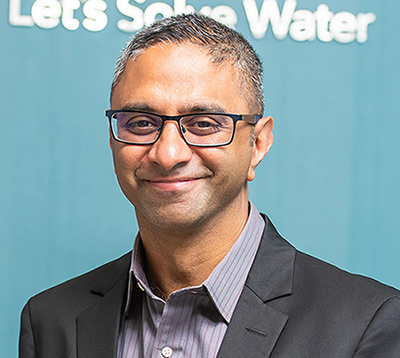By Chetan Mistry, Xylem Africa’s Strategy and Marketing Manager
THE municipality of eThekwini, which includes the holiday playground Durban, faces many challenges, including sewage leaking into the sea—forcing the closure of beaches—and losing revenue from its water. A recent analysis of reports estimates that Johannesburg loses 39% of its pumped water, Nelson Mandela Bay’s losses are 44%, and 46% of Mangaung water goes missing.
However, eThekwini leads the pack with an astounding 56 percent, tallying losses in the region of R5 million daily. Those funds could help fix the sewage problems and promote safe, clean beaches.
Experts refer to such losses as non-revenue water: paid water that never reaches its destination due to leaks and theft, ultimately leaving the bulk buyer—the municipality—without any returns. eThekwini could recoup nearly R2 billion annually if it reduced non-revenue water losses.
Water’s data is rising
Digital solutions are empowering water utilities in fantastic new ways. They gain better insight into the condition and performance of their water networks and systems, using data that is already available or quick to generate. The right combination of data experts, technologies and engineering skills can give every water utility actionable information on everything from pipes and valves to pumping stations and sewage systems.
“Using data to manage, optimise and proactively maintain water infrastructure is delivering excellent results,” says Chetan Mistry, Xylem Africa’s Strategy and Marketing Manager. “We have case studies where customers stopped repeated disruptions and reduced their capital planning time by 75%. The answer is to use data and pinpoint the areas that need priority attention, then develop a longer-term plan for maintenance and replacements. But many utilities don’t do this because they think they don’t have enough information. That’s often not the case. They already sit on a wealth of insights.”
The power of prediction
What kind of results can they expect? Assets connected digitally with sensors generate patterns that reveal many interesting insights, including maintenance status, underperformance, excessive energy consumption, flow, pressure, water level, pH levels, conductivity and numerous other metrics. The collected information can support operations and maintenance planning, alarms and service quality supervision.
Data flourishes with skills and AI
These amounts of data are big and growing bigger. To create helpful analytics, service providers combine civil engineering, data platforms and tools such as machine learning. They also apply their expertise to cleaning data, ensuring water managers avoid getting bad answers from poor-quality data. Then they bring it together to be understandable and streamlined so clients can make better decisions.
“Most data projects fall apart because they are mostly focused on technologies and not the skills and processes that lead to better understanding of data,” says Mistry. “At the very least, you need a data scientist to find value in your data. We enhance our data products with a deep bench of experts with backgrounds in mathematical modelling, system dynamics and civil engineering. Those make up the essential pieces of getting useful and relevant insights.”
If South African cities have the correct information, they can recoup millions in lost water revenue and realise maintenance savings. They already have the data to start making crucial choices.
Don’t drown in data. It’s time to swim with your insights and enjoy actual returns for true service delivery.
